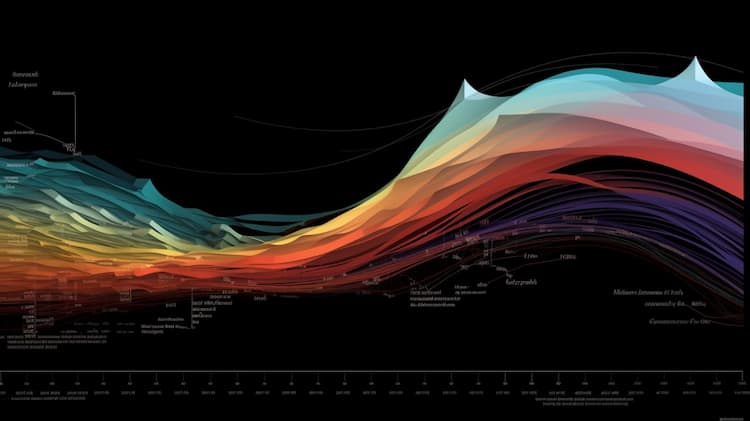
What types of companies are included in the USMV ETF?
The USMV ETF, or iShares Edge MSCI Min Vol USA ETF, is an exchange-traded fund that aims to provide investors with exposure to a diversified portfolio of U.S. equities while focusing on minimizing volatility. It offers investors an opportunity to potentially benefit from the advantages of low volatility investing. One common question that arises when considering the USMV ETF is, "What types of companies are included in this ETF?" In this article, we will explore the composition of the USMV ETF, shedding light on the types of companies it includes and the underlying principles that guide its selection process. By understanding the companies held within the USMV ETF, investors can gain insights into the potential benefits and risk characteristics associated with this low volatility investment approach.
USMV : Understanding ETFs
Exchange-Traded Funds (ETFs) have gained significant popularity among investors due to their diversified and cost-effective nature. One such ETF is the USMV (iShares Edge MSCI Min Vol USA ETF), which focuses on minimizing volatility and providing exposure to U.S. equities. To understand the types of companies included in the USMV ETF, let's delve into the fundamentals of ETFs and how they operate.
Understanding ETFs
ETFs are investment funds that trade on stock exchanges, similar to individual stocks. They are designed to track the performance of a specific index, sector, or asset class. The USMV ETF, in particular, tracks the MSCI USA Minimum Volatility Index, which comprises companies with lower volatility characteristics relative to the broader U.S. equity market. This means that the USMV ETF primarily includes companies that have historically exhibited lower price fluctuations compared to their peers.
Composition of the USMV ETF
To create a well-diversified portfolio, the USMV ETF invests in a wide range of sectors, including technology, healthcare, consumer goods, financials, and more. However, the portfolio construction process of the USMV ETF differs from traditional market capitalization-weighted indexes. Instead of allocating based on the company's market value, the USMV ETF focuses on factors like volatility and correlation to build a portfolio with potentially lower risk.
 USMV overlap What types of companies are included in the USMV ETF?
USMV overlap What types of companies are included in the USMV ETF?
Benefits of Investing in the USMV ETF
Investing in low volatility stocks has gained attention as a strategy to reduce risk and potentially enhance long-term returns. The USMV ETF aims to capture the benefits of low volatility investing by including companies that have historically demonstrated lower price fluctuations. Here are some advantages of investing in low volatility stocks through the USMV ETF:
Risk Mitigation: Low volatility stocks tend to exhibit less price variability, which can help mitigate portfolio risk. By focusing on companies with lower volatility, the USMV ETF aims to provide investors with a smoother investment experience during market downturns.
Potential Consistent Returns: Studies have shown that, over the long term, low volatility stocks have the potential to deliver consistent returns. By investing in companies that are less susceptible to market fluctuations, the USMV ETF aims to provide investors with stable performance.
Diversification: The USMV ETF's portfolio includes companies from various sectors, which helps provide diversification benefits. Diversifying across different sectors can reduce the impact of any single company or industry on the overall performance of the ETF.
Cost-Effective Exposure: ETFs, including the USMV, are known for their cost-effective nature compared to other investment vehicles. With a single investment, investors can gain exposure to a diversified portfolio of low volatility stocks.
The USMV ETF offers investors exposure to a diversified portfolio of U.S. equities with an emphasis on companies that exhibit lower volatility characteristics. By investing in low volatility stocks through the USMV ETF, investors can potentially benefit from risk mitigation, consistent returns, diversification, and cost-effective exposure. It's important for investors to carefully assess their investment objectives and consult with a qualified financial advisor before making any investment decisions.
Disclaimer: This article is for informational purposes only and does not provide any investment advisory services.
Source 1: USMV issuer website
Source 2: Reuters article about USMV
USMV quote and analysis
Discover the top holdings, correlations, and overlaps of ETFs using our visualization tool.
Our app allows you to build and track your portfolio.
To learn more about the USMV iShares MSCI USA Min Vol Factor ETF, access our dedicated page now.
FAQ
What is the USMV ETF?
The USMV ETF, or iShares MSCI USA Minimum Volatility ETF, is an exchange-traded fund that aims to provide investors with exposure to U.S. equities while focusing on minimum volatility.
What is the underlying index that the USMV ETF aims to track?
The USMV ETF aims to track the performance of the MSCI USA Minimum Volatility Index, which is designed to represent the performance of U.S. stocks with lower volatility characteristics.
What types of companies are included in the USMV ETF?
The USMV ETF includes a diverse range of companies from various sectors within the U.S. equity market. It seeks to select stocks with lower volatility characteristics while maintaining broad sector representation.
How does the USMV ETF work?
The USMV ETF works by employing an index-based approach that selects and weights stocks based on their historical price volatility. The ETF's portfolio is constructed to potentially provide lower volatility compared to the broader U.S. equity market.
What are the advantages of investing in the USMV ETF?
Investing in the USMV ETF offers potential benefits such as reduced exposure to market volatility, potentially providing a smoother investment experience. It may appeal to investors seeking a more defensive approach to equity investing while still maintaining exposure to U.S. stocks.



